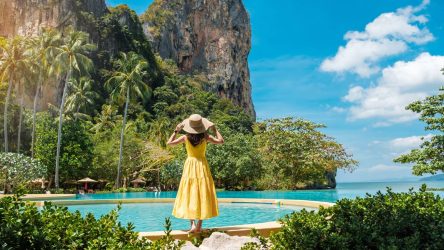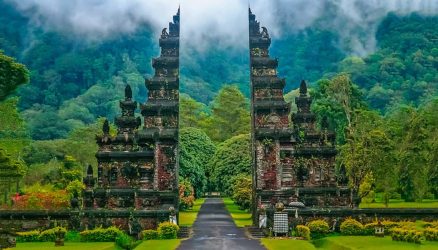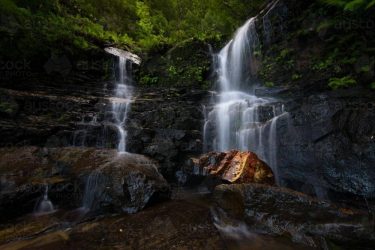Colombia is the second most biodiverse country in the world
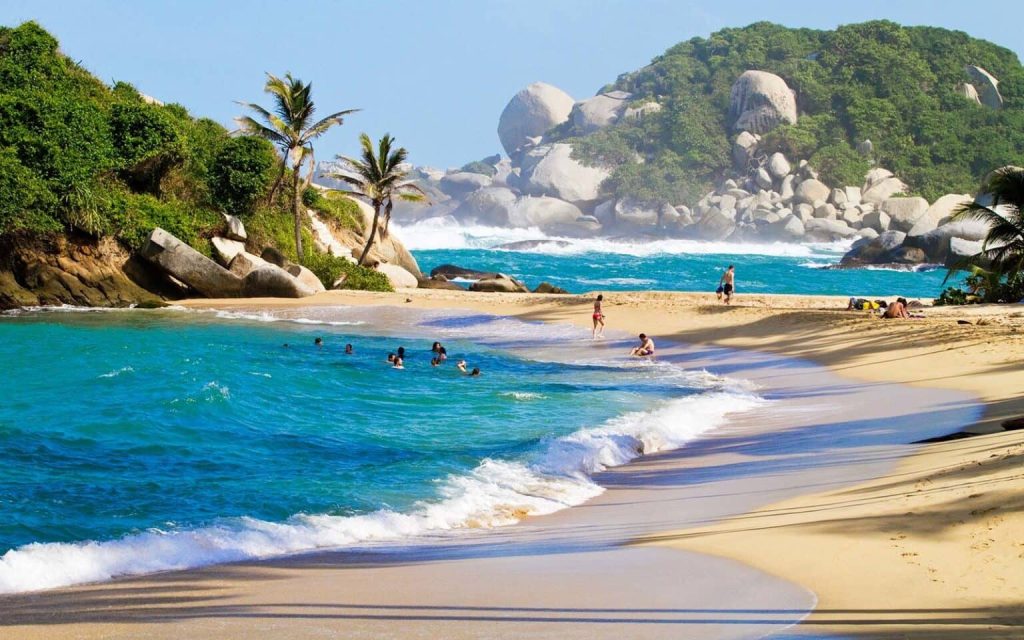
Despite its relatively small size, Colombia ranks second globally in biodiversity, just after Brazil. The country boasts a wide variety of ecosystems, including rainforests, mountains, plains, and coastlines, supporting over 56,000 recorded species. It leads the world in bird and orchid diversity, and is among the top in amphibians and butterflies. Colombia’s unique geographic position near the equator, combined with varied altitudes and climates, makes it a haven for wildlife and one of the most ecologically diverse nations on Earth.
It’s the Only South American Country with Coastlines on Two Oceans
Colombia is the only country in South America bordered by both the Pacific Ocean and the Caribbean Sea, part of the Atlantic Ocean. This dual-coastline geography grants Colombia a wide range of beach destinations, marine ecosystems, and trade access. Tourists can enjoy serene Caribbean beaches like San Andrés or go surfing on the wilder Pacific shores. These coastal areas not only shape Colombian culture and cuisine but also make the country strategically significant for shipping and international commerce.
Bogotá is one of the highest capital cities in the world
Bogotá, the capital of Colombia, sits at an altitude of approximately 2,640 meters (8,660 feet) above sea level, making it one of the highest capital cities globally. This elevation contributes to its cool climate year-round, despite being located near the equator. Visitors often experience a mild temperature range, typically between 10°C to 20°C. Bogotá’s height also gives it scenic views and a unique charm. However, travelers may need time to adjust to the altitude, especially when engaging in physical activities.
Colombia produces more emeralds than any other country
Colombia is renowned for its emerald production, accounting for about 70-90% of the global supply. The country’s Muzo, Coscuez, and Chivor mines are known for producing some of the finest quality emeralds in the world, characterized by their deep green color and clarity. Emerald mining has deep cultural and historical significance in Colombia, dating back to pre-Columbian times. Today, these precious stones are a vital part of Colombia’s economy and a major draw for tourists seeking jewelry and gemstone tours.
The country is the world’s third-largest exporter of coffee
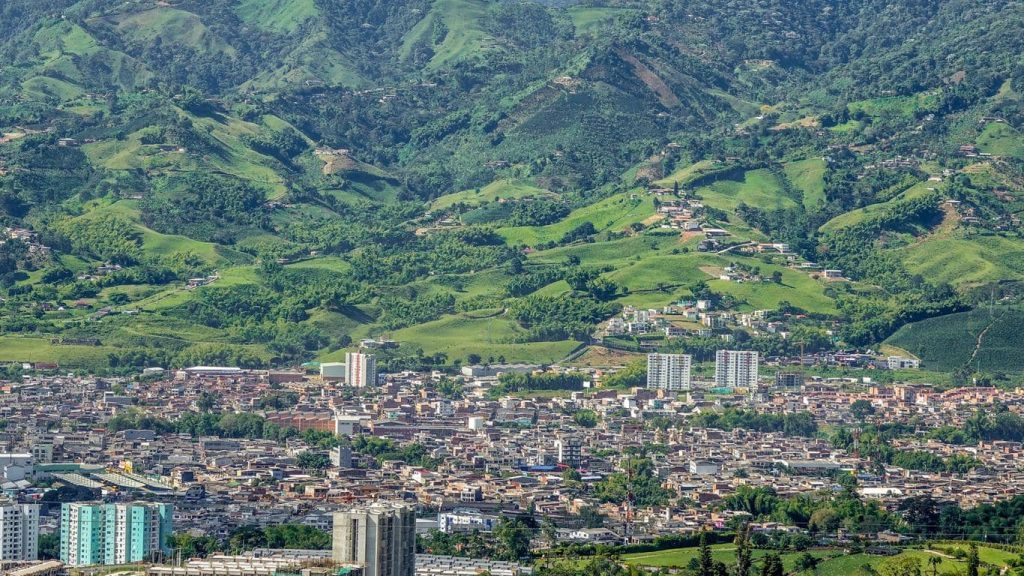
Colombia is globally recognized for its high-quality Arabica coffee and is the third-largest exporter of coffee, following Brazil and Vietnam. Colombian coffee is known for its smooth, mild flavor, thanks to ideal growing conditions in the Andean mountains, where high altitudes, volcanic soil, and consistent rainfall prevail. Coffee farming is a cultural tradition passed down through generations and plays a key role in the national economy. The Coffee Cultural Landscape is even designated a UNESCO World Heritage Site, highlighting its cultural and agricultural significance.
Colombia has over 1,900 bird species
Colombia holds the record for the most bird species of any country, with over 1,900 recorded varieties. This incredible avian diversity is due to its wide range of ecosystems, from coastal wetlands and rainforests to mountains and savannas. Birdwatchers from around the world visit Colombia to spot rare and endemic species like the Andean condor, Santa Marta parakeet, and Multicolored Tanager. Birdwatching tourism is growing rapidly, particularly in regions like the Sierra Nevada de Santa Marta and the Amazon.
The name “Colombia” is derived from Christopher Columbus
The name “Colombia” honors the Italian explorer Christopher Columbus (Cristóbal Colón in Spanish), although he never actually set foot in the country. The name was first used in the early 19th century during the independence movement to reflect the region’s break from Spanish colonial rule. Simón Bolívar, a key leader in South American independence, supported the name as a symbol of a unified continent. Eventually, the Republic of Colombia emerged, keeping the name as a lasting tribute to the spirit of exploration and freedom.
Medellín was once considered the most dangerous city in the world
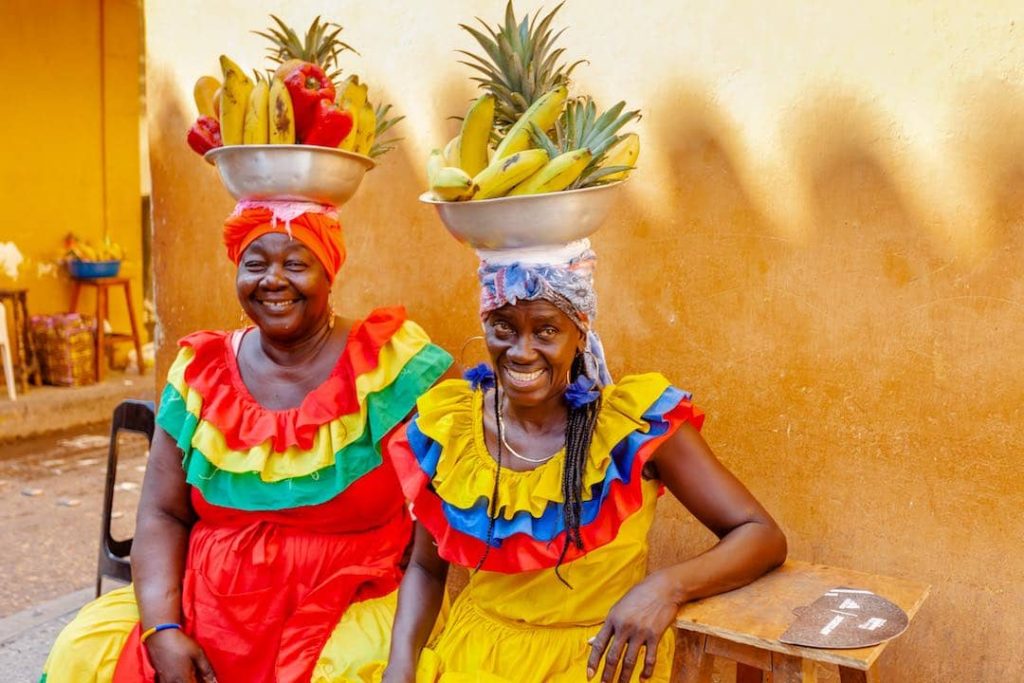
During the 1980s and early 1990s, Medellín was infamously known as the most dangerous city in the world due to the influence of drug cartels, particularly Pablo Escobar’s Medellín Cartel. Violence and crime were widespread. However, over the last two decades, Medellín has undergone a dramatic transformation. Innovative urban planning, education initiatives, and improved infrastructure have made it one of Latin America’s most innovative and livable cities. Today, it’s a hub for technology, art, and tourism, attracting visitors from around the world.
Colombia has 9 UNESCO World Heritage Sites
Colombia is home to nine UNESCO World Heritage Sites that showcase its rich cultural and natural history. These include Cartagena’s historic walled city, the Coffee Cultural Landscape, San Agustín Archaeological Park, and the National Natural Park Los Katíos. Each site reflects a unique aspect of Colombia’s heritage, from colonial architecture and Indigenous cultures to biodiversity and geological wonders. These protected landmarks not only attract global tourism but also emphasize Colombia’s commitment to preserving its diverse and vibrant legacy for future generations.
It’s one of the world’s top flower exporters
Colombia ranks as the second-largest exporter of flowers globally, just after the Netherlands. The country is especially known for its roses, carnations, and orchids, which thrive in the fertile valleys near Medellín and Bogotá. Colombia’s consistent climate and long daylight hours make it ideal for year-round flower cultivation. Flower exports play a significant role in the economy, employing hundreds of thousands of Colombians. During Valentine’s Day and Mother’s Day, millions of flowers are shipped to countries around the world, especially to the United States.
Colombians celebrate Christmas with fireworks and candles
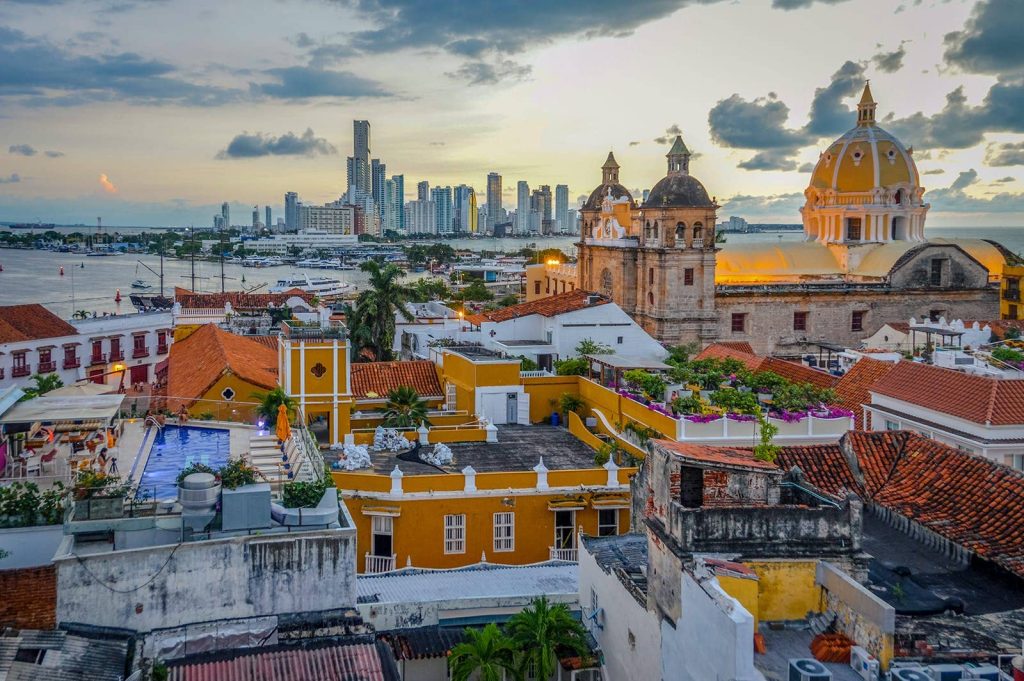
Christmas in Colombia is a vibrant celebration filled with lights, family gatherings, and fireworks. One of the most iconic traditions is “Día de las Velitas” or “Day of the Little Candles,” celebrated on December 7th. On this night, Colombians light candles and lanterns in honor of the Virgin Mary, illuminating windows, sidewalks, and parks across the country. It marks the official start of the holiday season and is followed by parades, nativity scenes, and traditional foods. The festive spirit lasts through New Year’s, blending religious and cultural traditions.
Sierra Nevada de Santa Marta is the world’s highest coastal mountain range
The Sierra Nevada de Santa Marta, located in northern Colombia, is the highest coastal mountain range in the world. Its snow-capped peaks rise dramatically to over 5,700 meters (18,700 feet) just 42 kilometers (26 miles) from the Caribbean Sea. This isolated range is home to incredible biodiversity and several Indigenous communities, such as the Kogi and Arhuaco peoples. The unique location and elevation make it a sacred and ecologically vital region. It’s also a paradise for trekkers, nature lovers, and photographers seeking stunning landscapes.
Colombian Spanish is known for its clarity
Colombian Spanish, especially the dialect spoken in Bogotá, is often considered one of the clearest and most neutral forms of Spanish. This makes Colombia a popular destination for foreigners learning the language. The pronunciation is precise, and the grammar usage tends to follow standard rules, making it easier to understand for learners. Language schools flourish in Bogotá and Medellín, offering immersive experiences. While accents vary across regions, the capital’s speech is widely praised by linguists and travelers alike for its intelligibility and refinement.
Shakira and Sofía Vergara are Colombian celebrities
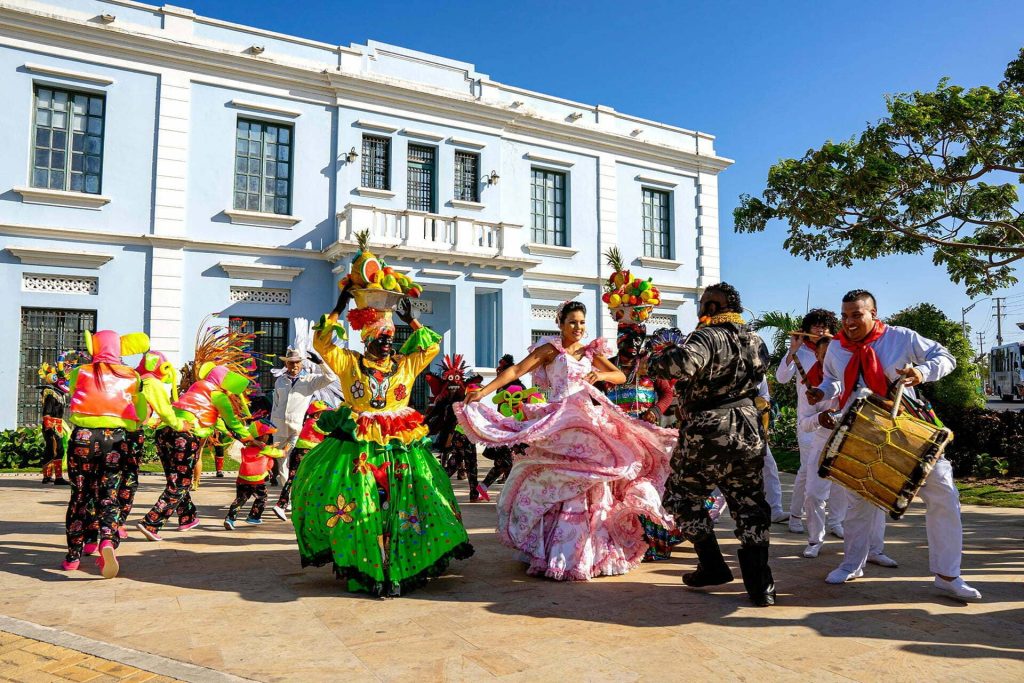
Colombia has produced numerous internationally acclaimed celebrities, including global music icon Shakira and actress Sofía Vergara. Shakira, born in Barranquilla, is known for blending Latin, rock, and Arabic influences in her music. She has sold millions of albums and performed at major world events. Sofía Vergara, originally from Cali, rose to fame through her role on the hit U.S. television show “Modern Family.” Their success showcases Colombia’s cultural talent and global influence in entertainment, music, and television industries.
The Amazon Rainforest covers a third of Colombia
Roughly one-third of Colombia’s land area is covered by the Amazon Rainforest, located in the country’s southeastern region. This part of the Amazon Basin is rich in biodiversity, featuring countless plant and animal species, many of which are endemic. The region is sparsely populated, mostly by Indigenous communities who rely on the land and river systems. Colombia’s Amazon is also a crucial player in climate regulation and carbon storage. Eco-tourism and conservation efforts aim to protect this essential part of the planet.
Cali is known as the “Salsa Capital of the World”
Cali, Colombia’s third-largest city, proudly holds the title of the “Salsa Capital of the World.” The city is famous for its vibrant music scene, passionate dancers, and world-renowned salsa schools. Nightclubs, festivals, and competitions dedicated to salsa draw thousands of visitors each year. Cali’s unique style of salsa dancing—characterized by fast footwork and high energy—sets it apart from other Latin dance hubs. The city’s infectious rhythm and lively atmosphere make it a must-visit destination for music and dance enthusiasts.
Colombian cuisine is diverse and regional
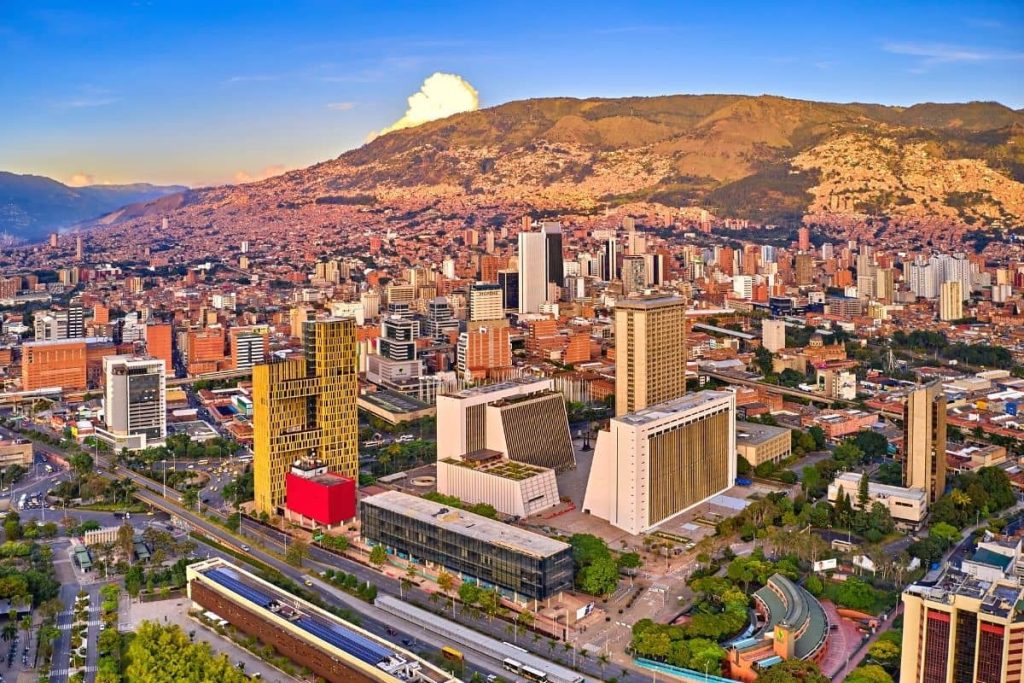
Colombian cuisine reflects the country’s geographic and cultural diversity. Coastal regions feature seafood dishes like ceviche and fried fish with coconut rice, while the Andes offer hearty meals such as ajiaco (chicken and potato soup) and bandeja paisa. In the Amazon, Indigenous ingredients like yuca and plantains dominate. Street food is popular everywhere, including arepas, empanadas, and tropical fruit. Each region has its own specialties influenced by Indigenous, African, and Spanish traditions, making Colombian food a flavorful journey across the country.
Tejo is national sport of Colombia
Tejo is Colombia’s national sport, deeply rooted in the country’s rural traditions. The game involves throwing a heavy metal disc (tejo) at a clay-filled board embedded with small packets of gunpowder, which explode on impact. It’s often played in social settings, usually accompanied by beer and snacks. Originating from Indigenous practices, Tejo blends skill, competition, and fun. While soccer remains the most popular sport in terms of following, Tejo represents Colombian identity and communal spirit, especially in smaller towns and countryside areas.
The Andean condor is Colombia’s national bird
The Andean condor, a majestic bird of prey with a wingspan up to 3 meters (10 feet), is Colombia’s national bird. It symbolizes liberty, power, and the natural grandeur of the Andes Mountains. Featured on the national coat of arms, the condor plays an important role in Andean mythology and is considered sacred by Indigenous cultures. Though once threatened by habitat loss and hunting, conservation efforts have been made to protect this iconic species. Spotting a condor in the wild is a rare and memorable experience.
Guatapé is famous for colourful buildings and El Peñol rock
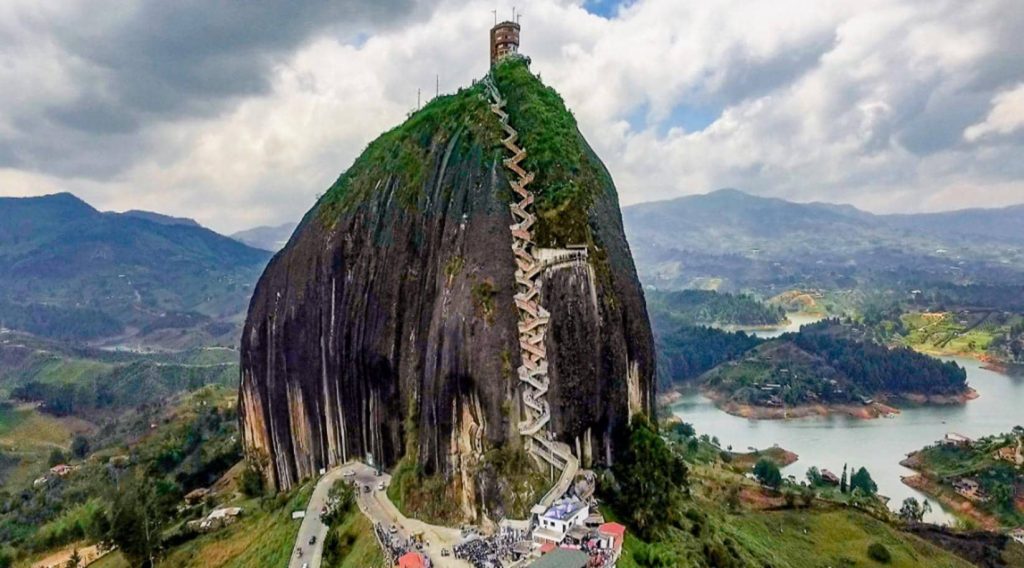
Guatapé, a picturesque town in Antioquia, is renowned for its vibrant zócalos—decorative murals adorning building facades—and its proximity to the giant rock monolith, El Peñol. The rock, officially called La Piedra del Peñol, towers 200 meters above the landscape and offers panoramic views after climbing its 740 steps. The colorful streets and charming vibe of Guatapé attract visitors year-round. It’s a popular day trip from Medellín, offering both natural beauty and cultural charm, making it one of Colombia’s most Instagram-worthy destinations.
Colombia has a diverse range of climates
Thanks to its location near the equator and varied elevation, Colombia features a wide array of climates within its borders. From tropical beaches and rainforests to high-altitude mountains and arid deserts, the country offers a climate for every preference. Cities like Cartagena are hot and humid year-round, while Bogotá experiences a cooler, spring-like climate. This diversity supports rich biodiversity and allows for the cultivation of many crops. Colombia’s varied climate zones also make it an appealing destination for travelers seeking different experiences.
Cartagena is a UNESCO World Heritage Site
Cartagena, a historic city on Colombia’s Caribbean coast, is recognized as a UNESCO World Heritage Site for its well-preserved colonial architecture and rich history. Founded in 1533, it served as a major port for Spanish trade and a defense hub against pirates. The city’s walled old town, with its cobblestone streets, colorful buildings, and centuries-old churches, attracts tourists from around the world. Cartagena blends history, culture, and seaside charm, making it one of the most visited destinations in Colombia.
The Lost City trek is Colombia’s answer to Machu Picchu

The Lost City, or Ciudad Perdida, is an ancient archaeological site located in the Sierra Nevada mountains. Believed to be older than Machu Picchu, it was built by the Tayrona people around 800 CE and rediscovered in the 1970s. Reaching the site requires a multi-day trek through dense jungle, rivers, and steep terrain, offering a physically demanding but rewarding adventure. The site features stone terraces, ceremonial plazas, and spiritual significance for Indigenous communities. It’s one of Colombia’s top adventure travel experiences.
Colombia has over 300 beaches
With coastlines on both the Pacific Ocean and the Caribbean Sea, Colombia boasts more than 300 beaches, each with unique appeal. The Caribbean side offers white sand beaches and turquoise waters in places like San Andrés, Tayrona National Park, and Rosario Islands. The Pacific coast, including Nuquí and Bahía Solano, is wilder and known for whale watching. Whether travelers seek relaxation or adventure, Colombia’s beaches provide a diverse range of options for sunbathing, surfing, snorkeling, and exploring marine life.
San Andrés and Providencia are Caribbean paradises
San Andrés and Providencia are tropical islands belonging to Colombia but located closer to Nicaragua. These Caribbean gems are known for their stunning coral reefs, crystal-clear waters, and unique Raizal culture, which blends African, English, and Spanish influences. Providencia, in particular, remains less touristy and offers a more laid-back vibe. The islands are part of the Seaflower Biosphere Reserve, promoting eco-tourism and marine conservation. With vibrant marine life and warm hospitality, they are ideal for diving, snorkeling, and beach getaways.
Colombia hosts the world’s second-largest carnival
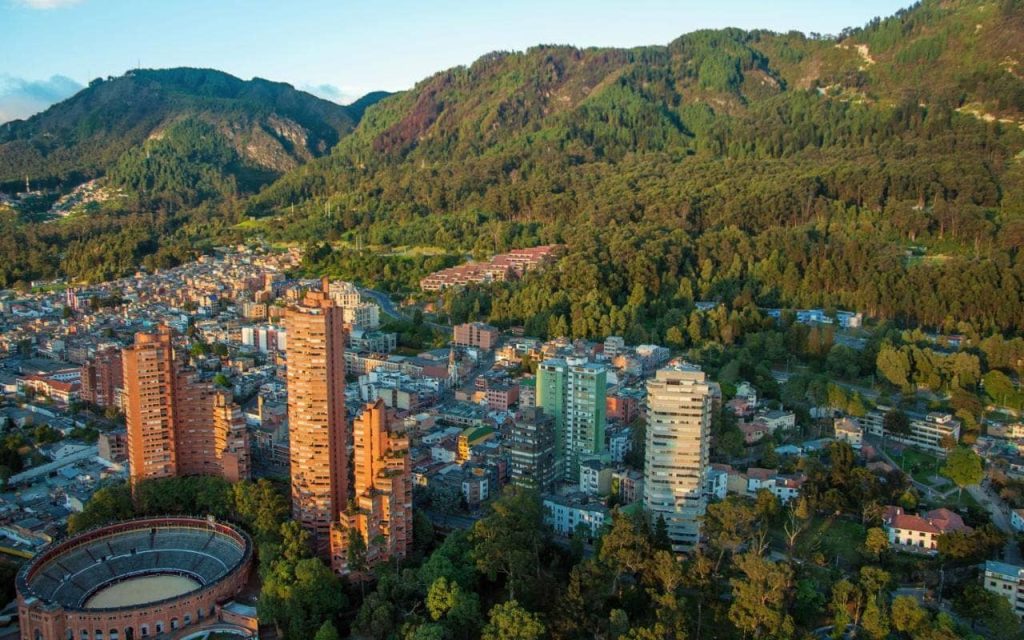
The Carnival of Barranquilla is one of the biggest and most vibrant carnivals in the world, second only to Rio de Janeiro’s. Held annually in February or March, this UNESCO-recognized event celebrates Colombia’s diverse cultural heritage through music, dance, costumes, and parades. Over four days, millions gather to experience traditional cumbia, colorful floats, and theatrical performances. The event brings together African, Indigenous, and Spanish influences, reflecting the country’s multicultural roots. It’s a lively and unforgettable celebration of Colombian identity.
The Caño Cristales River is called the “River of Five Colors”
Caño Cristales, located in Serranía de la Macarena National Park, is often referred to as the “River of Five Colors” due to its striking hues of red, yellow, green, blue, and black. This natural wonder occurs from July to November when aquatic plants called macarenia clavigera bloom. The river’s vibrant palette makes it one of the most unique and beautiful bodies of water on Earth. Accessible only during certain months, it offers an extraordinary eco-tourism experience in Colombia’s remote wilderness.
Colombia has more than 50 national parks
Colombia is home to over 50 national parks, covering various ecosystems including rainforests, deserts, mountains, and coral reefs. These protected areas, such as Tayrona, Cocuy, and Amacayacu, preserve the country’s biodiversity and cultural heritage. Many parks also host Indigenous communities who help manage and protect the land. Outdoor enthusiasts can hike, dive, observe wildlife, or relax on pristine beaches. Colombia’s commitment to conservation through its national parks system plays a key role in environmental sustainability and tourism development.
Colombia is one of the world’s largest gold producers
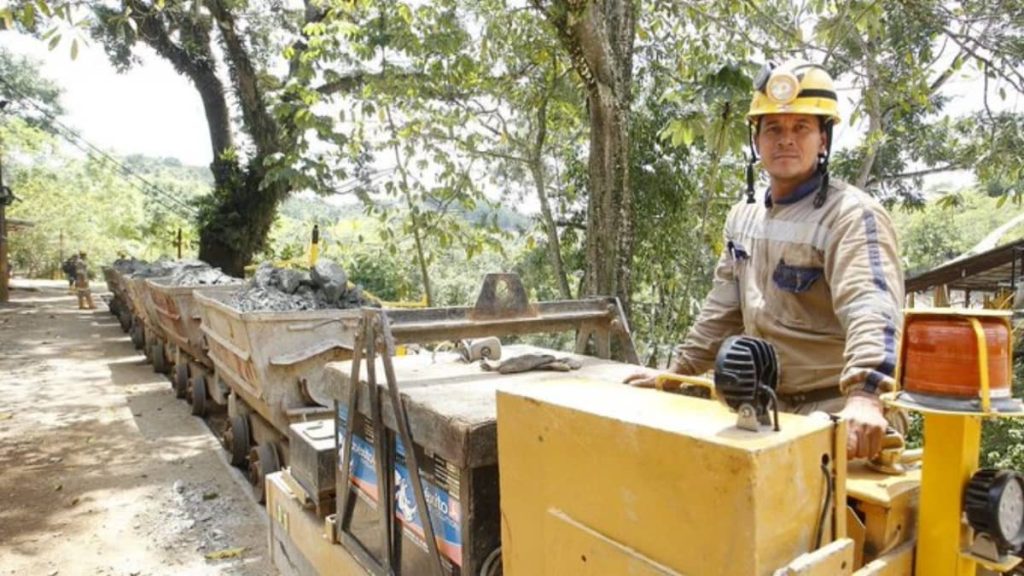
Colombia has been a major gold producer since pre-Columbian times, with Indigenous groups using the precious metal for art and rituals. Today, the country remains among the top global producers of gold, with regions like Antioquia and Chocó known for mining. Gold has deep cultural significance and was central to legends like El Dorado, which inspired countless explorers. Although modern gold mining contributes to the economy, it also raises environmental and social concerns, prompting efforts toward sustainable and responsible mining practices.
The Tatacoa Desert is a stunning natural attraction
The Tatacoa Desert, located in central Colombia, is a striking landscape of red and gray rock formations, canyons, and dry valleys. It’s not a true desert but a tropical dry forest with minimal rainfall. The area is known for its clear skies, making it one of the best places in Colombia for stargazing. Visitors can explore on foot, horseback, or bike while discovering fossil beds and unique geological features. Tatacoa offers a stark contrast to Colombia’s lush jungles and is a favorite among nature lovers and photographers.
You can visit the Tatacoa Desert, a stunning gray-and-red rock landscape that’s perfect for stargazing
The Tatacoa Desert, located in central Colombia, is a mesmerizing landscape with unique gray and red rock formations. Known for its arid terrain and clear skies, it offers one of the best stargazing spots in Colombia. Visitors can explore the desert’s beauty by hiking or cycling and enjoy the peaceful atmosphere under the stars. Despite its name, the Tatacoa Desert is a tropical dry forest, making it a striking contrast to the lush rainforests and mountains that Colombia is known for.
It’s home to Caño Cristales, the “River of Five Colors,” known as the most beautiful river in the world
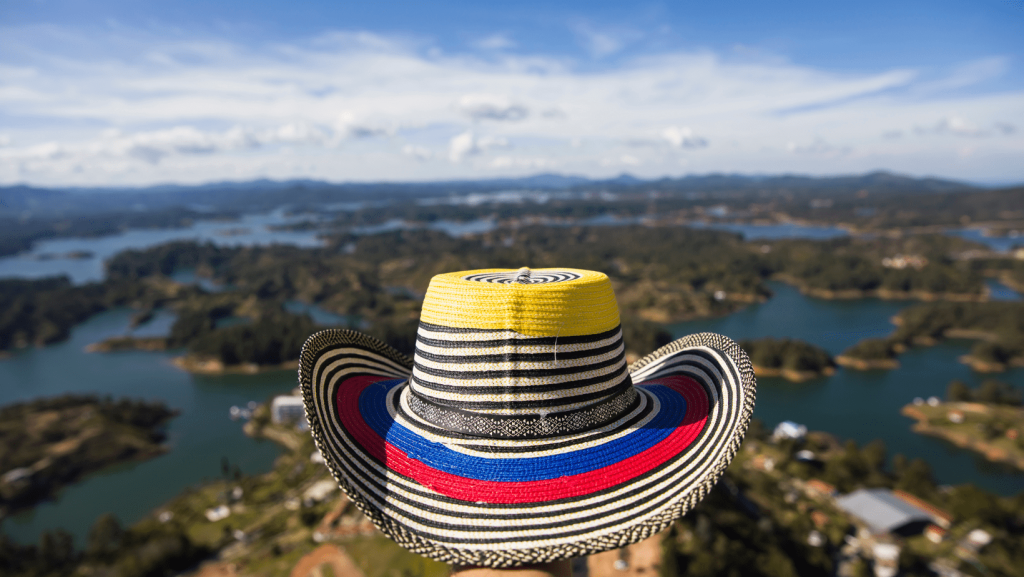
Caño Cristales, located in the Serranía de la Macarena National Park, is often dubbed the “River of Five Colors” because of its incredible spectrum of colors. From July to November, the river blooms with vibrant shades of red, yellow, blue, green, and black due to the unique aquatic plants that grow in its waters. This natural phenomenon creates one of the most stunning and visually striking rivers in the world, drawing eco-tourists and nature enthusiasts from across the globe to witness its beauty.
The arepa is a national food staple, made of ground maize and enjoyed in many forms
Arepas are a beloved staple of Colombian cuisine, made from ground maize dough and enjoyed in a variety of ways. These versatile flatbreads can be grilled, fried, or baked and are often served with fillings such as cheese, meats, or eggs. Depending on the region, arepas may be thin and crispy or thick and soft, making them a perfect accompaniment to meals or a snack on their own. Arepas are a key part of Colombian food culture and can be found everywhere, from street vendors to restaurants.
The Zona Cafetera (Coffee Zone) offers scenic coffee farms and cultural experiences
Colombia’s Zona Cafetera, or Coffee Zone, is a picturesque region known for its lush coffee plantations and stunning mountain landscapes. This UNESCO World Heritage Site is not only a place to tour coffee farms but also a cultural hub where visitors can experience the process of coffee cultivation, from bean picking to roasting. Tourists can visit small towns like Manizales, Armenia, and Salento, where coffee culture is central to local life. The region also offers hiking, nature walks, and vibrant festivals celebrating the coffee harvest.
Colombian music genres include vallenato, cumbia, and champeta
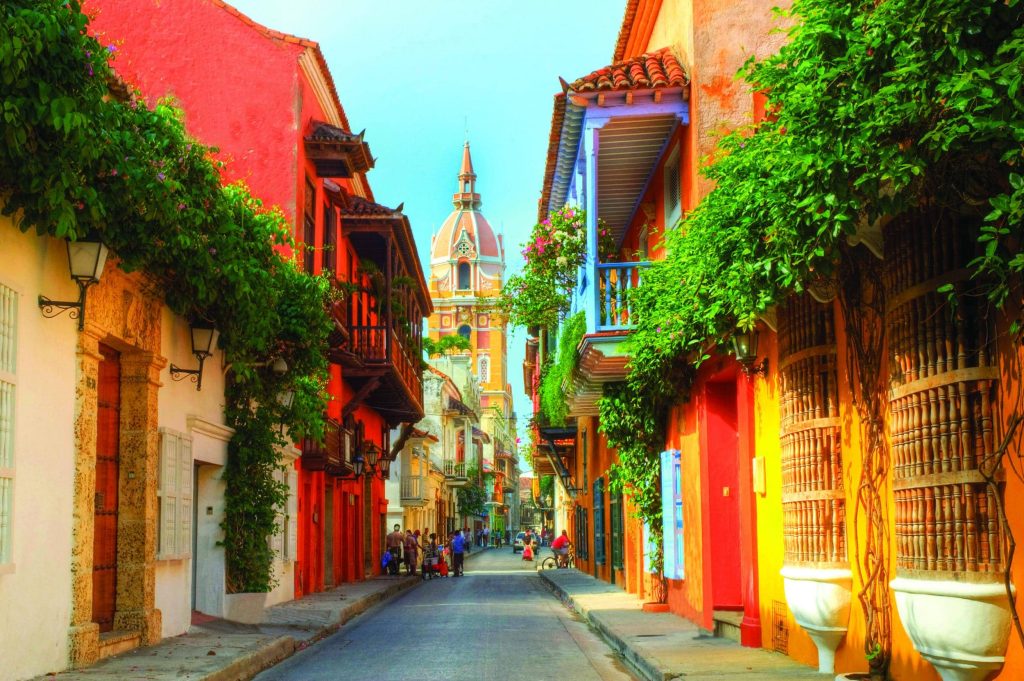
Colombian music is rich in variety, reflecting the country’s diverse cultural influences. Vallenato, a traditional genre from the Caribbean coast, uses instruments like the accordion and caja drum to create joyful rhythms. Cumbia, originating from Indigenous, African, and Spanish traditions, blends percussion and wind instruments to produce rhythmic and lively tunes. Champeta, a more modern style from the coastal regions, mixes African and Caribbean influences. These music genres, along with others like salsa and reggaeton, form the heart of Colombia’s vibrant musical culture.
Colombia has hosted Miss Universe twice, and the country has produced several winners
Colombia has a long history of success in the Miss Universe competition, having hosted the event twice, in 1958 and 2014. Additionally, the country has produced several winners over the years, including the famous beauty queens, like Catalina Acosta and Paulina Vega, who won in 2014. Colombian women are known for their beauty, grace, and intelligence, making them strong contenders in international beauty pageants. Their successes have helped raise Colombia’s profile on the world stage.
The country is a major exporter of bananas and palm oil
Colombia is one of the world’s leading exporters of bananas, especially to the United States and Europe. The country’s tropical climate is perfect for cultivating bananas, and its banana-growing regions are vital to Colombia’s agricultural economy. Palm oil is another significant export for Colombia, with the country being one of the largest producers in the world. Palm oil is used in a wide range of products, including food, cosmetics, and biofuels. The export of both products plays an important role in Colombia’s economic growth.
The Medellín Metro is the only metro system in Colombia

The Medellín Metro is the only metro system in Colombia, serving as a model of urban transport and innovation. Opened in 1995, it revolutionized public transportation in the city, offering a modern, efficient way to navigate the hilly terrain of Medellín. The metro system includes both trains and cable cars, making it easier for residents to access different neighborhoods. It’s known for its punctuality, cleanliness, and integration with other forms of public transport, making Medellín one of the most transit-friendly cities in Colombia.
Cartagena is one of the best-preserved colonial cities in Latin America
Cartagena is a stunning example of colonial architecture and history, earning its place as one of the best-preserved colonial cities in Latin America. Its walled city, cobblestone streets, and colorful buildings have been largely preserved since Spanish colonial times. Cartagena’s rich history as a key port and its role in the Spanish Empire are reflected in its landmarks, such as the Castillo de San Felipe de Barajas. Today, the city is a UNESCO World Heritage Site and one of the most visited destinations in Colombia, attracting travelers with its charm and history.
from tropical islands to surf-friendly Pacific coastlines
Colombia’s diverse coastlines stretch along both the Caribbean Sea and the Pacific Ocean, offering more than 300 beaches to explore. On the Caribbean coast, places like San Andrés, Cartagena, and Tayrona National Park are known for their white sandy beaches and crystal-clear waters. The Pacific coast offers more rugged and remote beaches like Nuquí and Bahía Solano, famous for whale watching. Whether you seek tropical paradise or a surfing adventure, Colombia’s beaches offer something for every type of traveler.
Next Destination North America
Conclusion
Colombia is a land of breathtaking diversity, from vibrant cities and colonial history to lush rainforests and colorful rivers. With its rich culture, warm people, and incredible biodiversity, the country offers something for every kind of traveler. Whether you’re exploring its bustling metropolises, relaxing on tropical beaches, or hiking through ancient ruins, Colombia captivates with its beauty and charm. These 50 fascinating facts only scratch the surface of what this South American gem has to offer. Ready to discover Colombia for yourself?

Owen Samuel is a Destination Manager based in California, known for his expertise in creating unforgettable travel experiences. With a deep passion for tourism and local culture, he helps travelers discover the best places around the world.







